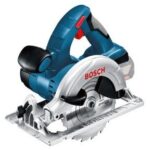Saws have been in use for thousands of years, branching out to fill specific niches as the times, technology, and materials required. Today’s “complete” tool collection will include a variety of saws, from coping saws to hacksaws to any of a number of specialized table saws, and sometimes includes more than one saw of a given type.
There are many specialized cutting tools as well, but they are not commonly used outside of trades they were developed for. Additionally, you may be surprised to find that many saws are regionally called by the name of other saws. In most cases, the shape of the saw plus the count and shape of the teeth will determine how a saw was intended to be used.
Here are different types of saws, their uses, and pictures:
Hand Saws
Hand saws have evolved to fill many niches and cutting styles. Some saws are general purpose tools, such as the traditional hand saw, while others were designed for specific applications, such as the keyhole saw.
No tool collection is complete without at least one of each of these, while practical craftsmen may only purchase the tools which fit their individual usage patterns, such as framing or trim.
 Back Saw
Back Saw
A back saw is a relatively short saw with a narrow blade that is reinforced along the upper edge, giving it the name. Back saws are commonly used with miter boxes and in other applications which require a consistently fine, straight cut. Back saws may also be called miter saws or tenon saws, depending on saw design, intended use, and region.
Bow Saw
Another type of crosscut saw, the bow saw is more at home outdoors than inside. It uses a relatively long blade with numerous crosscut teeth designed to remove material while pushing and pulling. Bow saws are used for trimming trees, pruning, and cutting logs, but may be used for other rough cuts as well.
 Coping Saw
Coping Saw
With a thin, narrow blade, the coping saw is ideal for trim work, scrolling, and any other cutting which requires precision and intricate cuts. Coping saws can be used to cut a wide variety of materials, and can be found in the toolkits of everyone from carpenters and plumbers to toy and furniture makers.
 Crosscut Saw
Crosscut Saw
Designed specifically for rough cutting wood, a crosscut saw has a comparatively thick blade, with large, beveled teeth. Traditional 2-man crosscut saws (aka felling saws) have a handle on each end and are meant to be used by two people to cut across (perpendicular) the grain of timber.
The more common 1-man crosscut saw is great for rough cutting lumber, trimming limbs or branches, and makes an excellent saw for camping or at the job site.
 Fret Saw
Fret Saw
Most closely resembling a coping saw, the fret saw has a long, thin blade for making intricate cuts. The fret saw has a longer, larger frame that allows cutting farther from the outer edges, but the blade cannot be rotated, which results in more tedious and difficult cutting positions when performing intricate scrollwork.
 Hacksaw
Hacksaw
Perfect for cutting pipes and tubing, the hacksaw is one of the most common saw types. They are lightweight and versatile, able to cut through wood, metal, plastic and other materials using material-specific cutting blades with a tooth count ranging from about 18 to 32 per inch.
 Japanese Saw
Japanese Saw
Built with a single handle and a protruding strong, thin cutting blade, this type of saw is more precise than a back saw and has the advantage of being able to reach places where other saws cannot reach. They saws are available in three types (dozuki, ryoba, and kataba), and can be used to cut hard and soft woods with equal precision.
 Keyhole Saw
Keyhole Saw
Best described as a round handle with a single blade protruding from the top of the handle, a keyhole saw is used to rough cut circles or patterns. Keyhole saws can be indispensable for drywall, especially when a small section needs to be removed and/or replaced, or where the interior of the wall prevents the use of powered tools.
 Pruning Saw
Pruning Saw
Pruning saws most often have a 13-15″ curved blade, protruding from a single “pistol grip” style handle. The blade is wide and has coarse teeth that are able to cut in both directions for faster material removal. Pruning saws are more commonly found in a homeowner’s toolkit, but they are also widely used by tree surgeons, lawn services, and landscapers.
 Rip Cut Saw
Rip Cut Saw
Often referred to simply as a “hand saw,” the rip cut saw is a must-have for framing. It has relatively few teeth per inch, but each tooth is a sharpened point designed to remove wood. Anyone who works with wood will have one or more rip cut saws, usually of varying lengths.
 Veneer Saw
Veneer Saw
Another highly specialized saw, the veneer saw is designed with a short double-edged blade that has about 13 teeth per inch. This saw is specifically used for precision veneer work, and the short blade prevents it being readily adapted to most other cutting tasks.
 Wallboard Saw
Wallboard Saw
Looking very similar to a keyhole saw, the wallboard saw generally has a shorter, wider blade and fewer teeth per inch and often comes in a double-edge variety. It is designed for puncturing through paneling or drywall, and is often used to create starter holes for powered tools.


